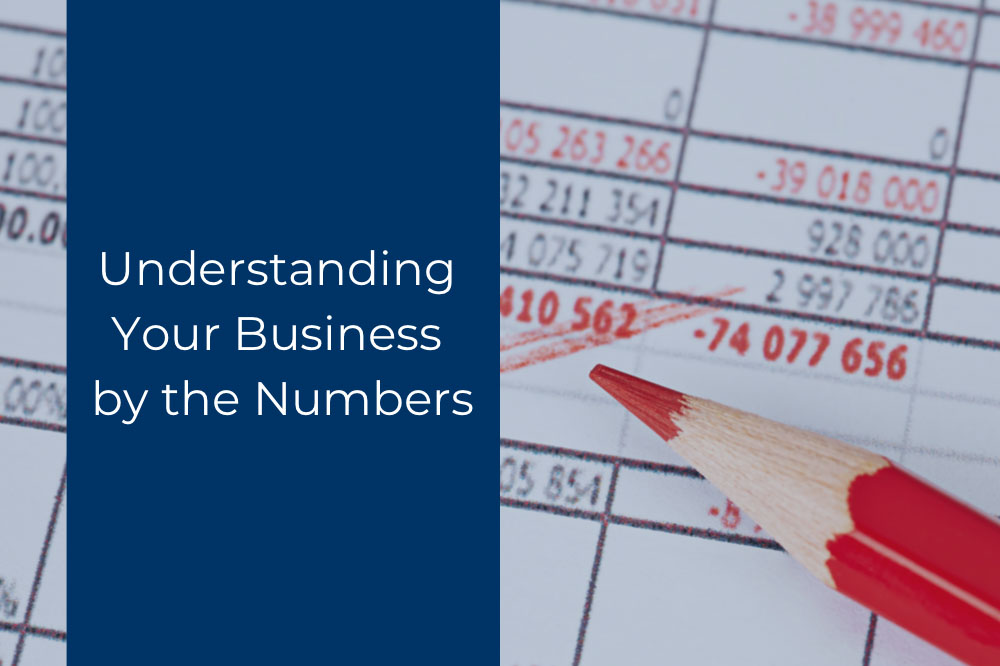If you are like most entrepreneurs or business owners, you have a deep passion for what you do. You are an expert in your field and you want to share your knowledge, products, and services with those around you. All those qualities are what made you get into business for yourself, but, if you are, indeed, like most business owners, you might be missing the key component to running a successful business — understanding your business by the numbers.
Now what do I mean by that? Most business owners I work with are far more interested in what their businesses do rather than how their businesses actually run.
Let’s see where you fall with this short quiz:
- What were last month’s revenues?
- How much did you payout your Independent Contractors in the last payment?
- What is the percentage increase (or decrease) of last month’s expenses?
- What were your total gross profits from Q1?
- What were your total net profits from Q1?
How many of those questions could you answer? If you don’t know the answers, do you know where to look for them? As entrepreneurs, we are often focused on the next big idea, rather than the day-to-day financials, but it’s those numbers that will make or break your company.
So, what do you need to know and how do you even identify those numbers? Here are some of the basic financial terms you need to know to ensure your business is successful for years to come:
Revenue: Revenue is the money your business makes from goods and services sold. No deductions, just the flat amount.
Gross Profit: This is how much money you are making before you subtract taxes and other expenses, but after you subtract the general costs of goods sold or the costs associated with providing your services. So if you sell t-shirts and you made $100 (revenue), but $10 of that was the cost of the shirts themselves (cost of goods sold or COGS), then your gross profit would be $90 (and keep in mind this is a VERY simplified equation example).
Revenue – COGS = Gross Profit
Gross Profit Margin: This is a big one! Gross profit divided by sales/revenue (then you would typically multiply this number by 100 so you get a percentage). This number determines whether you are losing or making money and it’s deceiving because you might have cash in the bank, but the profit margin percentage will show you what’s actually going on in your business books. If the number does come out positive, congratulations….but now you should check that number with the average percentage of profit margin for your industry. If your industry standard is 20%, but your Profit Margin is only 2%, you are still making money, but now you can see that something is being mismanaged.
Gross Profit ÷ Revenue (x 100) = Gross Profit Margin
Net Profit: Net profit is all the money that is left over after you account for all expenses, including taxes, operating expenses, costs of goods, depreciation of assets, etc.
Gross Profit – Total Expenses = Net Profit
Net Profit Margin: The net profit margin shows how much of your money is actually translating to true profits. This is one of those concepts that’s important to note. For example, your revenue can increase, but so can your expenses, so the net profit margin can help you distinguish what money is what.
Net Profits ÷ Total Revenue (x 100) = Net Profit Margin
Working Capital: Working capital is the money you have right now. This is a good indicator of your short-term financial health. Ideally, your company should have a ratio of current assets to current liabilities that is greater than 1.
Current Assets – Current Liabilities = Working Capital
Marketing Expenses: Usually the biggest marketing expense is advertising, which is fairly easy to adjust. What you should look at in your advertising dollars is how they correlate to sales. If you don’t see any connection, then you might need to rethink your strategy.
Contractors and Compensation: This is usually a large expense, often the largest. The hardest part about knowing this number is knowing when you need to cut it. It’s never an easy conversation (or conversations), but an owner who knows the numbers will know when to make this call.
General Expenses: As the owner, you should have a general idea of your regular, monthly expenses. If you can readily see places to make adjustments (aka cuts), then keep those in mind for any hard days ahead.
Research and Development: Research and development includes all the activities you might undertake to improve your products or services. This number will fluctuate, but you should be thinking ahead so you can adjust these numbers accordingly.
Knowing what’s going on in your business goes way beyond customer service issues or inventory. You need to know the numbers and understand what they truly mean for the overall health of your business. Entrepreneurs who have a clear understanding of their books will also have a clear advantage over any business owner who does not.
So how are your numbers adding up?

